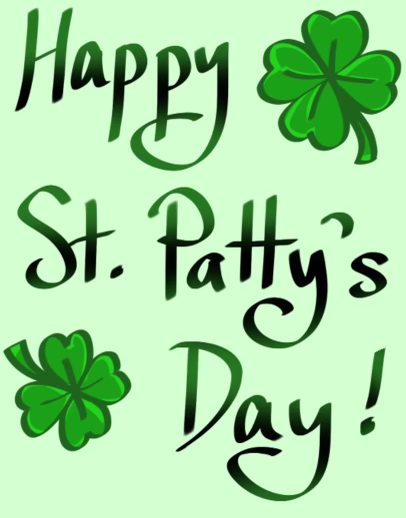On March 17th, children across America will wake up to find their homes ransacked by a supposed small green man. Gold coins will line classrooms, corned beef and cabbage will be served at dinner tables and shades of green will erupt over the country.
Anyone who has ever sat in an elementary school classroom during March will have learned about St. Patrick’s day. But how did a holiday celebrating an Irish patron saint make its way to America? And how has it become so embedded in our culture?
In Ireland, St. Patrick’s day was a time for modest celebration. A celebration of the man who, according to legend, rid Ireland of snakes and introduced Catholicism to the country. Rather than jubilant parades, people celebrated with modest feasts and religious services.
Many American states lay claim to the “first” American St. Patrick’s day celebration. According to History.com, the first official St. Patrick’s day parade was in New York in 1762. But the party didn’t really begin until the middle of the 17th century, when the Great Hunger brought slews of Irish people over to America in hopes of a better life. Upon arrival, they were criticized and pushed out by American citizens for traditions deemed “untraditional” and “lack of discipline.” The Irish began to band together in solidarity against a nation that did not accept them. On the feast day of St. Patrick, a major celebration in their culture, gathered in the streets to reconnect with their heritage. Being far from home, alone in a scary new place, St. Patrick’s day became more of a celebration of Irish culture itself.
The lore of the leprechaun, who frequently visits children across the United States on St. Patrick’s day has become a totem of false American stereotypes about the Irish that we continue to insert into popular culture. Take, for instance, the six Leprechaun horror movies, all of which star Warwick Davis. Those movies certainly put an…interesting spin on leprechauns, which differs greatly from the true origins of the creature.
The Leprechaun, in Irish culture, is actually based on water spirits, and is not clad in green at all. They instead wear red. Though our idea of the leprechaun originated in America, Ireland has put its own spin on the myth. Every year, the town of Carlingford hosts a leprechaun hunt.There are also pubs and caverns themed around leprechauns and fairies to draw tourists located there. One pub in particular, owned by PJ O’Hare, has the suit of a leprechaun hanging on the wall. The species is protected by the EU (according to the Irish Examiner,) and a major focus for Irish lobbyists like Kevin Woods, who fought for the protection of the Sliabh Foy, a trail in Louth and a home for the 236 leprechauns that exist in Ireland today, as claimed by Woods.
So when you celebrate this Irish on this March 17th, whether that be on the streets of Philadelphia for the annual parade, or having a serving of corned beef and cabbage, remember the true history of the holiday!
